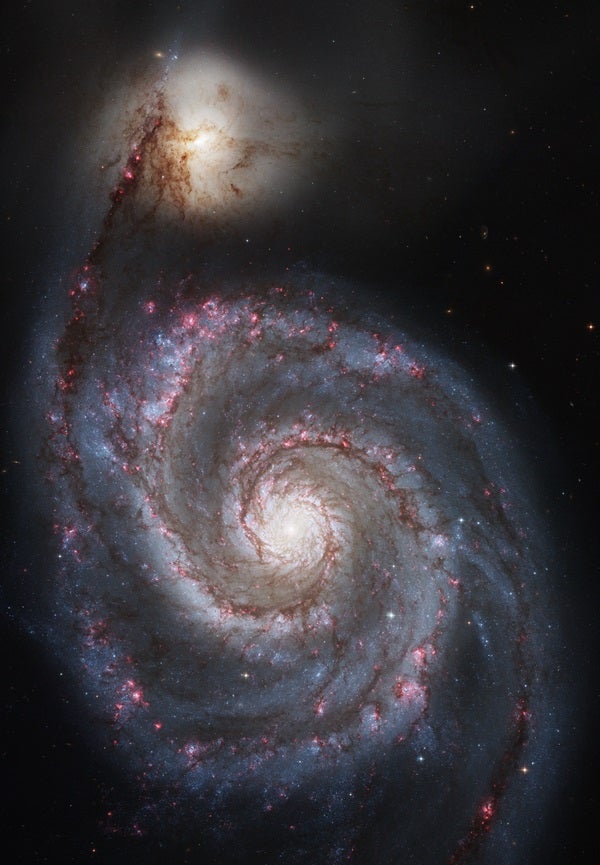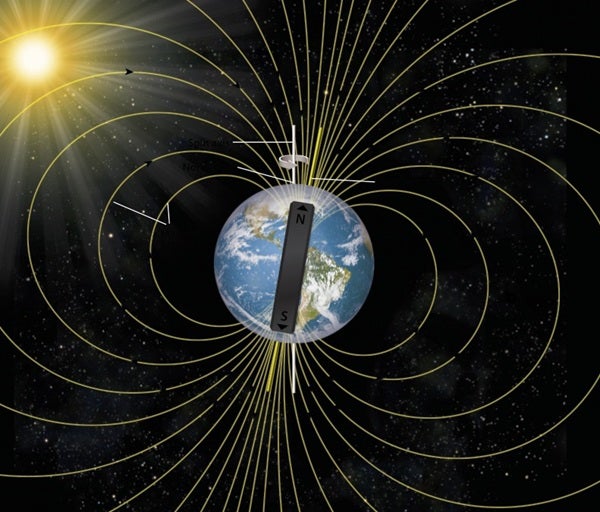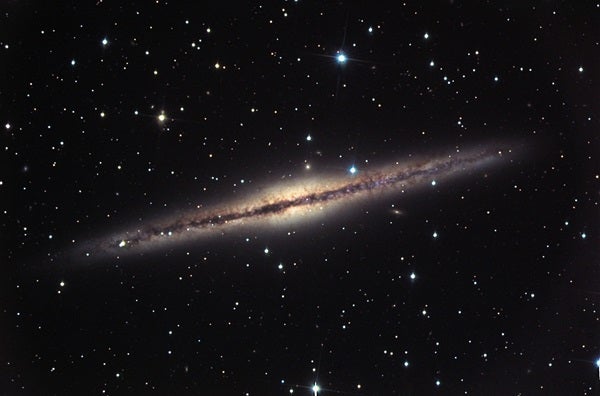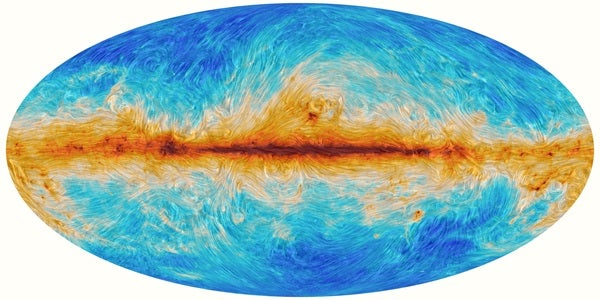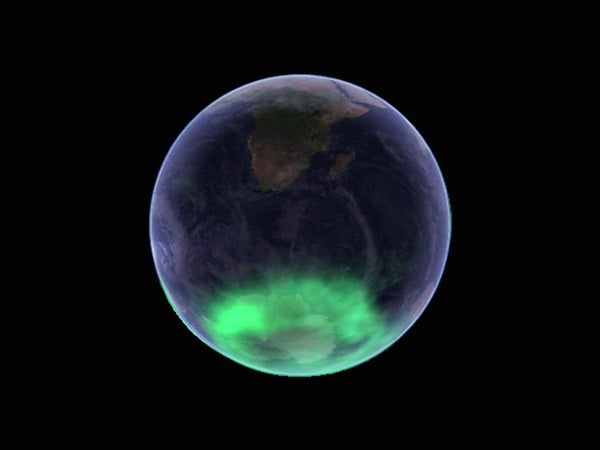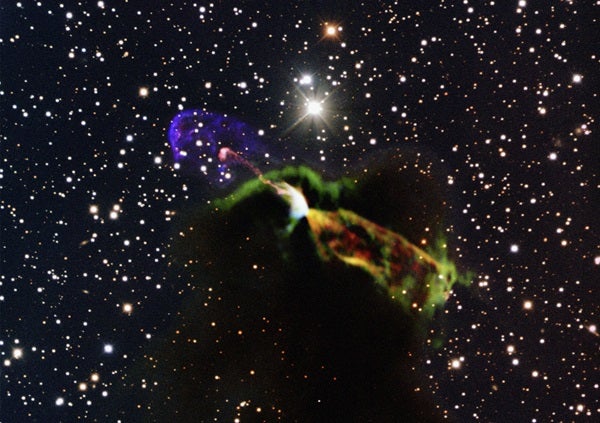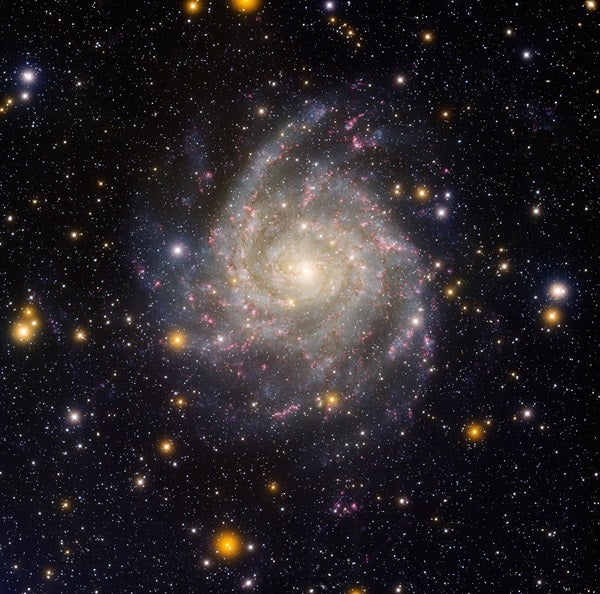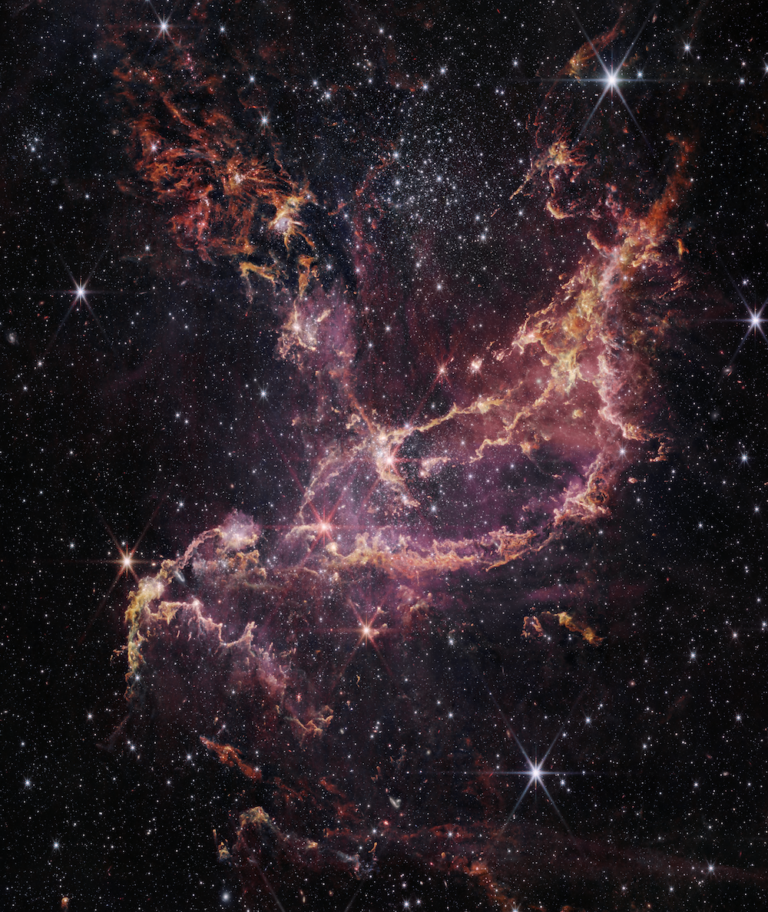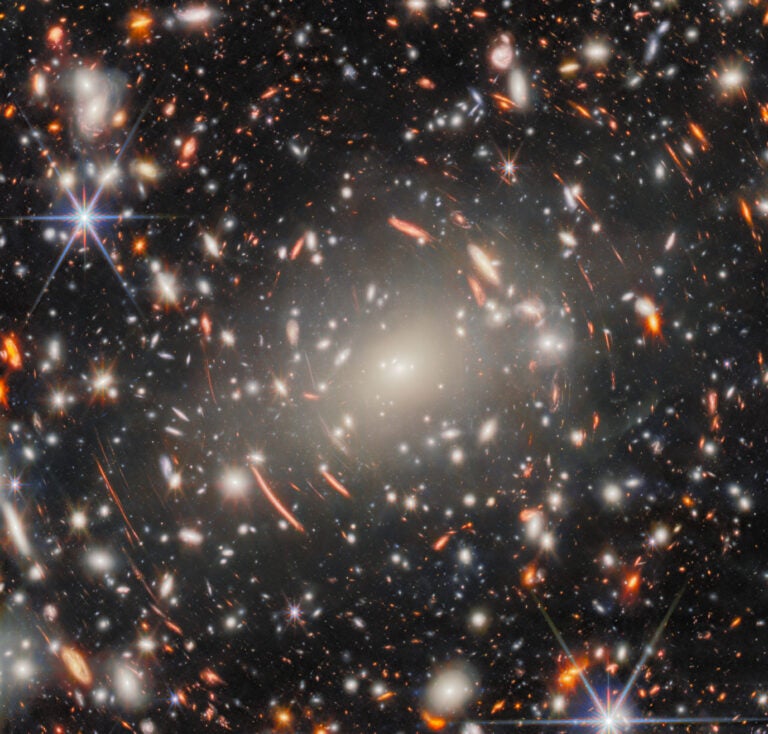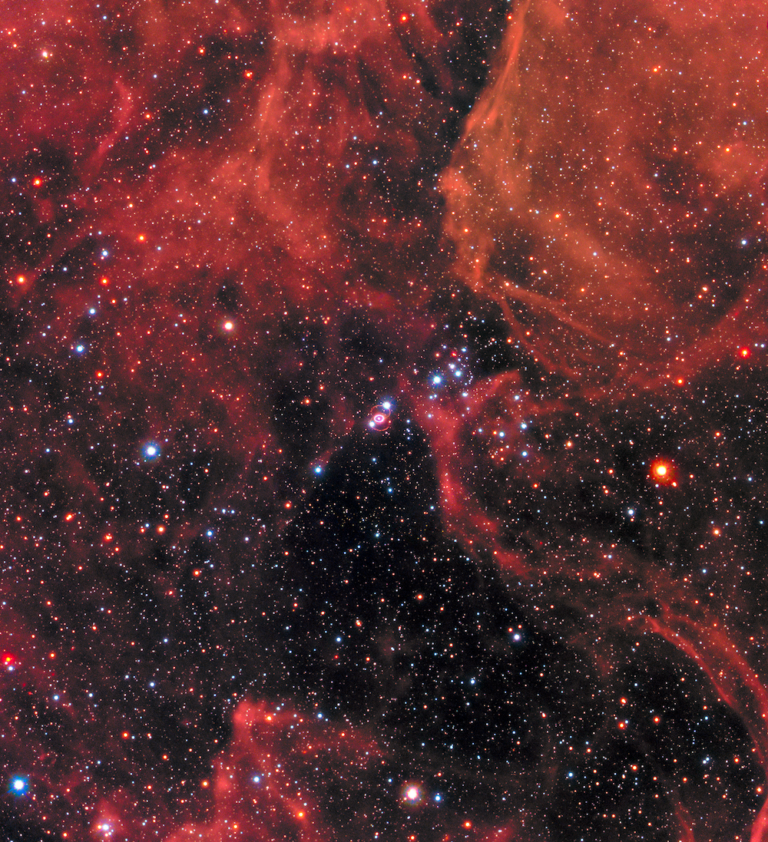On a basic level, humans have had some understanding of natural magnetism since the time of the ancient Greeks. They discovered that lodestone placed on a raft in a bowl of water would align in a north-south direction — in other words, with Earth’s magnetic field. In 1865, Scottish scientist James Clerk Maxwell first recognized that electricity and magnetism are not separate forces but actually work together, and that light is a form of electromagnetic radiation. Maxwell presented the world with the first unified field equations, and “Maxwell’s equations” became the bedrock of electromagnetism, as fundamental for physics as Newton’s laws are to explain gravitation.
We can’t see magnetic fields the way we see light, but anyone who has played with
a compass has basic experience with measuring magnetic fields. A compass needle points north because Earth’s interior essentially contains a giant bar magnet, not unlike the one stuck on your refrigerator but about 10 times weaker and much larger. It exists because Earth’s rotation causes molten iron in its core to move, creating a “dynamo” that generates the magnetic field.
Earth’s magnetic field is important beyond its use as a handy navigational aid. The magnetosphere it creates around the planet shields us from cosmic rays — charged particles from outer space that can damage electronics — and a steady stream of particles from the Sun known as the solar wind. Strong solar outbursts, which are driven by the Sun’s magnetic field, could prove lethal to an astronaut in space, but the magnetosphere ensures they don’t harm us on the ground. The largest effect we see from the solar wind occurs when the magnetosphere channels the charged particles toward the north and south magnetic poles, where they excite atoms and molecules in the upper atmosphere and cause the aurora.
That said, much about Earth’s magnetic field remains a mystery. For one thing, the geologic record tells us that Earth’s magnetism reverses every few hundred thousand years. The field disappears for a few thousand years and then re-establishes itself with the poles facing opposite directions. These flips occur at random intervals; the last full reversal happened about 780,000 years ago. Although no one knows when the next reversal will take place, and we will be powerless to stop it, researchers do know that Earth’s magnetic field has been weakening for thousands of years. For example, the lodestone-in-a-bowl-of-water trick no longer works if you were to try it today because the field is 35 percent weaker than it was a few thousand years ago.
Out to galaxies
But planetary fields aren’t the only ones out there. Magnetic fields are present almost everywhere in the universe, and the biggest webs can span entire galaxies. Although these galactic magnetic field lines are only a billionth as strong as a typical fridge magnet, they more than make up for this shortcoming with their vast size. Maxwell’s equations say that the energy in a magnetic field equals its strength multiplied by its volume, so a significant fraction of a galaxy’s total energy can be tangled in its magnetic field. “Just like how right now we’re worried about dark matter or dark energy in astronomy, we should also be concerned about magnetism,” says Bryan Gaensler, director of the Dunlap Institute at the University of Toronto, who specializes in understanding magnetic fields. He adds that the strength of a galaxy’s magnetic field is equivalent to the radiation pressure exerted by all the stars within it.
Unlike observing the light from stars, however, detecting magnetic field lines in space is tricky because you can’t see them directly except under special circumstances. This means astronomers rely on various indirect methods, studying how magnetism changes the light that arrives on Earth. “It’s similar to wanting to clean the dirt off a window,” says Gaensler. “If you want to see the dirt, you can’t do it at night, but you can during the day by using the light from the Sun.”
This astronomical “window cleaning” relies on a special property observed in starlight called polarization, which shows itself as a particular orientation of light’s electromagnetic waves. Although most light from natural sources is not polarized, astronomers discovered in the 1940s that polarization does cause a “twist” in starlight. They realized that the light becomes polarized on its way to their telescopes, and the culprit is the otherwise unseen magnetic fields between Earth and the stars.
Since then, a startling picture of galactic magnetic structure has begun to emerge. For one thing, almost all galaxies with magnetic fields do not show a tangled web but instead present an ordered spiral structure — even in galaxies that don’t look spiral-shaped to our eyes. Magnets are fragile things — you can break one by dropping it a few times, for example — so the idea that ordered magnetic structures are so prevalent in our chaotic universe confuses those who want to know where they come from and how they persist.
What’s more, it appears that these magnetic structures affect a wide range of properties in their host galaxies, from overall galactic structure to how stars form within them. The nearby Whirlpool Galaxy (M51) provides a good example. As amateurs with even modest telescopes can see, the Whirlpool has a smaller companion galaxy (NGC 5195) that seems to bob on the end of one of M51’s spiral arms like a Christmas ornament. The interaction between these two galaxies causes density waves — waves of compression that sweep through a galaxy’s disk — to ripple through the Whirlpool. In this case, the magnetic fields not only follow the optical spiral structure but also compress the gas at the inner edges of the arms.
This is exciting because it appears that the strength of the galaxy’s magnetic field correlates with the density of interstellar gas, though astronomers have yet to pin down the exact details. They do know, however, that cosmic magnetism plays a big role in creating stars born inside these dense interstellar clouds. In the first step, gas begins to clump together in what scientists call a protostar. Eventually, the protostar grows dense enough that it collapses under its own gravity, becoming a full-fledged star when it starts fusing hydrogen into helium in its core. But explaining stellar birth through gravity alone is impossible. If that were the only force at play, the protostar would spin itself apart long before it could reach a mass approaching that of our Sun. Astronomers now think that strong magnetic fields in these gas clouds create a drag on the protostar, allowing it to gain enough mass to ignite.
While we are used to the classical picture where gravity is the master of the universe, it is apparent that magnetism has been a vital assistant in creating the cosmos we see today. The Milky Way is a typical spiral galaxy with a spherical bulge surrounded by a flatter pancake of spiral arms some 150,000 light-years across but only 1,000 light-years thick. And though gravity holds it all together, if that force acted alone, our galaxy would deflate because all the matter in the pancake-shaped disk would collapse to the plane. Astronomers think this doesn’t happen because magnetic pressure provides a buoyant force that counters gravity.
Gaensler belongs to the camp that thinks the formation process could be quick. A decade ago, he led a team that studied polarized light from the Large Magellanic Cloud (LMC), one of the Milky Way’s small satellite galaxies. Our galaxy’s powerful gravity is slowly pulling the LMC apart. This has thrown our companion into turmoil, triggering bursts of star formation and supernovae. The researchers expected that these violent events would shred something as delicate as a magnetic field.
Instead, Gaensler and his team were stunned to discover an ordered, smooth magnetic field despite the chaos. “It’s like having a birthday party all day for a bunch of 6-year-olds, and then finding the house neat and tidy after they leave,” Gaensler says. “Some powerful forces must be at work to keep the magnetic fields from becoming tangled and disrupted.” No one knows exactly what this process would be, but the findings suggest that galaxies can generate magnetic fields quickly, perhaps within 100 million years or so.
Beck has uncovered his share of magnetic mysteries as well. His most recent was the discovery of novel magnetic structures in the nearby galaxy IC 342. This spiral galaxy lies just outside the Local Group, making it one of our nearest neighbors. Beck and his team discovered a helical loop of a magnetic field coiled around the galaxy’s largest arm. “If you take a toy spring and pull it apart to a large size, that’s how it would look,” he says. No one had predicted such a structure before, emphasizing just how complex magnetic fields can be.
But don’t sell our galaxy short when it comes to magnetic puzzles. Because we live in the Milky Way, scientists can observe the galaxy’s magnetic field in far more detail than they can any other. Astronomers have seen features unique to the Milky Way, but they don’t know if these are truly unusual or just impossible to detect in more distant galaxies. For example, the magnetic fields follow our galaxy’s visible spiral arms as they do in other galaxies, yet in the Milky Way, each arm seems to have its own magnetic field that is independent of the others. What’s more, the direction of the field can change from arm to arm, pointing one way in one and the opposite way in an adjacent one. If you take two bar magnets and push the same poles together, they repel; no one can explain why we don’t see a similar effect in our galaxy.
It’s clear that the magnetic puzzle is still missing many pieces. As such, Beck and Gaensler are two of the hundreds of scientists and engineers involved in building the Square Kilometre Array (SKA), a new radio telescope project that will begin construction in 2018 in South Africa and Australia. SKA will contain up to a million antennas with an effective collecting area of a full square kilometer (0.4 square mile) and will be 50 times more sensitive than any other radio telescope. Radio astronomers expect to see first light in 2020.
When SKA does come online, studying cosmic magnetism will be a key science goal. In one priority, astronomers will seek magnetic signatures in galaxies that are beyond the reach of today’s instruments. Such observations should shed light on what generates these magnetic fields and when they show up in the formation of a galaxy.
A second priority will be to re-examine nearby galaxies and look in much greater detail at how magnetic fields interact with one another. A more comprehensive picture of magnetic fields in galaxies could show how they affect star formation and galactic structure — and likely will uncover new puzzles as well. Astronomers certainly have made important headway in untangling the magnetic universe, but they still have a lot of work to do before these mysteries are fully unraveled.

